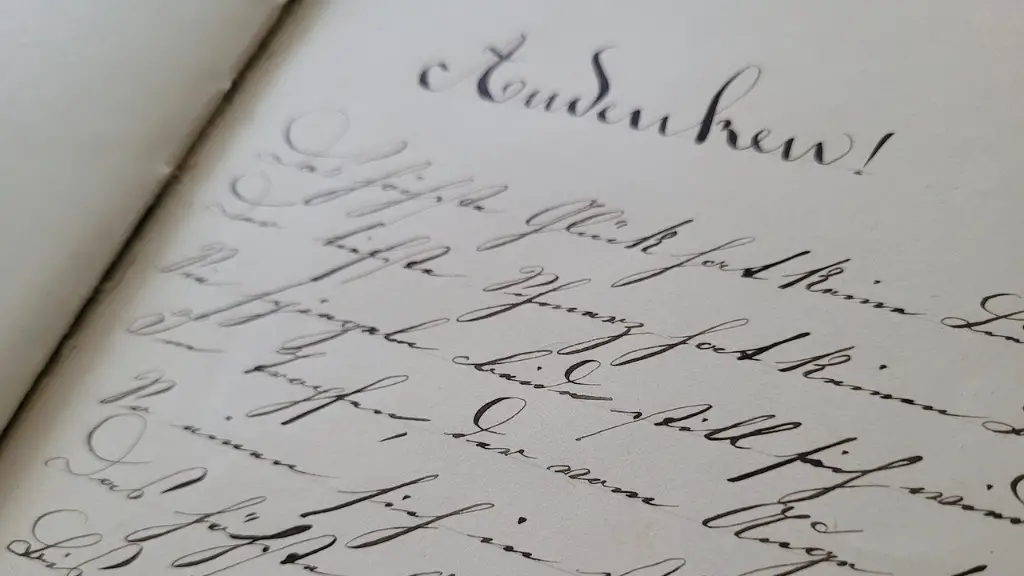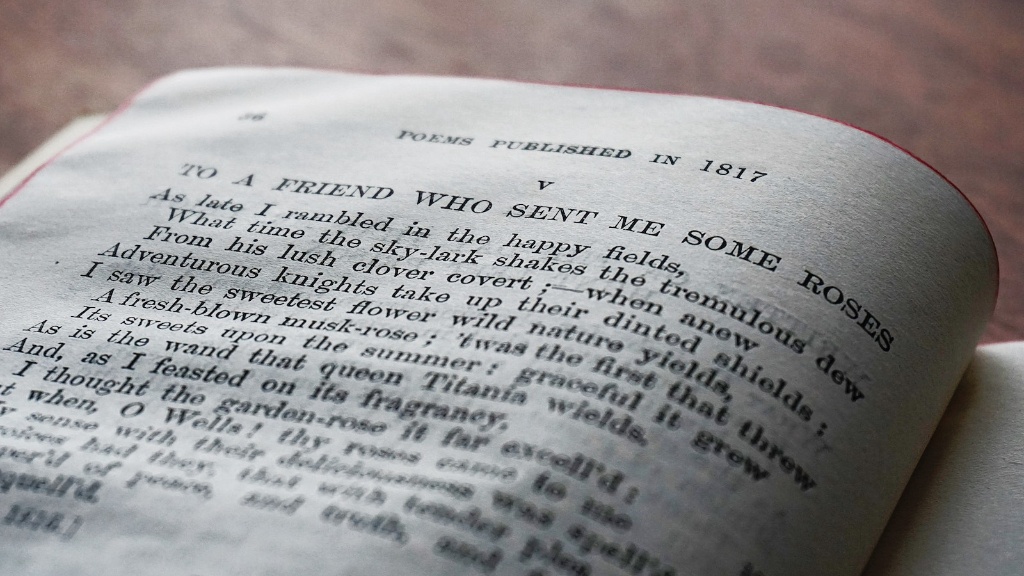What is the Element of Poetry?
Poetry is the use of language to evoke emotion, create an experience and connect with the reader. It is a written form of expression that uses rhythm, rhyme and form to tell a story and create an atmosphere. Poetry has been around for thousands of years and is a way of expressing emotion, thought and knowledge through words. The element of poetry is a combination of the following:
Content and Imagery
Poetry is usually written in verse and often contains imagery that is descriptive and narrative. The use of imagery helps to create an emotional connection between the poet and their audience and convey underlying meanings and messages. Using vivid and colorful language, a poet can evoke the senses in their readers and bring the poem to life. Through the use of vivid imagery, the poem can become more than just words on the page, but rather an experience for the reader.
Rhythm and Meter
Rhythm and meter are essential elements of poetry. A poem can have either a regular or irregular rhythm, depending on the poet’s desired effect. When a poem has a regular rhythm, it is said to have a meter. As a poet writes, they can choose a meter that will dictate the regularity and pattern of the poem. This can be used to incorporate emphasis on specific words, create a sense of unity, or bring attention to a particular idea or concept. The rhythm and meter of a poem can create a feeling of movement and give the poem a musical quality.
Structure
The structure of a poem is another element of poetry. It can take the form of a traditional poem, a sonnet, or a free verse. The structure of the poem helps to provide shape and emphasis to the words and can create a sense of unity and consistency. By using specific forms and structures, poets can bring attention to certain words and the overall meaning of the poem. It can also create a feeling of rhythm and flow.
Sound Devices
Sound devices, such as alliteration, assonance, and onomatopoeia, enhance the sound of the poem. By using sound devices, a poet can draw attention to a particular line or idea and create a sense of rhythm in the poem. These devices can also help to create a more vivid and memorable experience for the reader. Alliteration is the repetition of the same consonant sound at the beginning of words, assonance is the repetition of the same vowel sound, and onomatopoeia is the use of words to imitate the sound of what it is describing.
Theme
The theme of a poem is the overall idea or message that the poet wishes to express. A poem can be about any topic, from love to death to politics, and the poet will often choose a theme or message that they wish to convey. This can be done through the use of imagery, sound devices or by choosing specific words and phrases. By using a specific theme, the poet can create a lasting impression and make their poem stand out.
Tone
The tone of a poem is the attitude towards the poem’s subject. It can be humorous, mysterious, sad, angry, or any other emotion. The tone of the poem can be conveyed through the poet’s choice of words and imagery. The tone of the poem can also be used to emphasize and draw attention to the theme. By choosing the right tone, the poet can create an atmosphere and evoke emotions in the reader.
Exploring with Language and Wordplay
Exploring with language and wordplay is another important element of poetry. Poets often use words and phrases to create an atmosphere, evoke emotion and convey a message. By using metaphor, similes and allusions, the poet can create vivid images and communicate a meaning that is not necessarily stated outright. Poets also use rhyme and repetition to create a sense of unity, rhythm, and flow. Wordplay can also be used to add humour, tension and complexity to a poem.
Exploring the Purpose of Poetry
The purpose of poetry can be varied, from expressing personal experience and emotion, to communicating a message or story, to creating laughter or fascination. Writing poetry can be a way to explore the world and one’s own thoughts, feelings, and dreams. It is a way of expressing oneself without relying on language and instead using rhythm, rhyme and form to connect with readers. Through poetry, a poet can engage with the reader in a meaningful way and create a lasting impression.
Exploring the Impact of Poetry
The impact of poetry can be profound and far-reaching, both for the poet and the reader. It can be a way to explore the depths of one’s self and to connect with the world around them. Poetry can also act as a bridge between the personal and the global, allowing poets to explore the human condition and the world at large, in creative and unique ways. On a more personal level, poetry can open readers up to new ideas and perspectives, inspiring them to take action or pursue their passions.
Exploring the Power of Poetry
The power of poetry is often underestimated. It can be an incredible tool for self-exploration, connecting one’s own experience to the larger world. Through poetry, the poet can explore their thoughts and feelings and communicate them to their readers in a powerful and meaningful way. Poetry can also act as a tool of resistance, a way to express dissent and challenge oppressive systems. By using language to communicate ideas, they can create impactful change in the world.
Exploring the Global Impact
The global impact of poetry is profound. It has the power to bring people together, to bridge divides and create a shared experience. Poetry transcends cultures and borders, uniting people from all around the world. Poets can use their voice to challenge oppressive systems, express their unique experiences and create unique stories that can be shared by many. Through poetry, the poet can capture and express the human experience in ways that words alone cannot.



